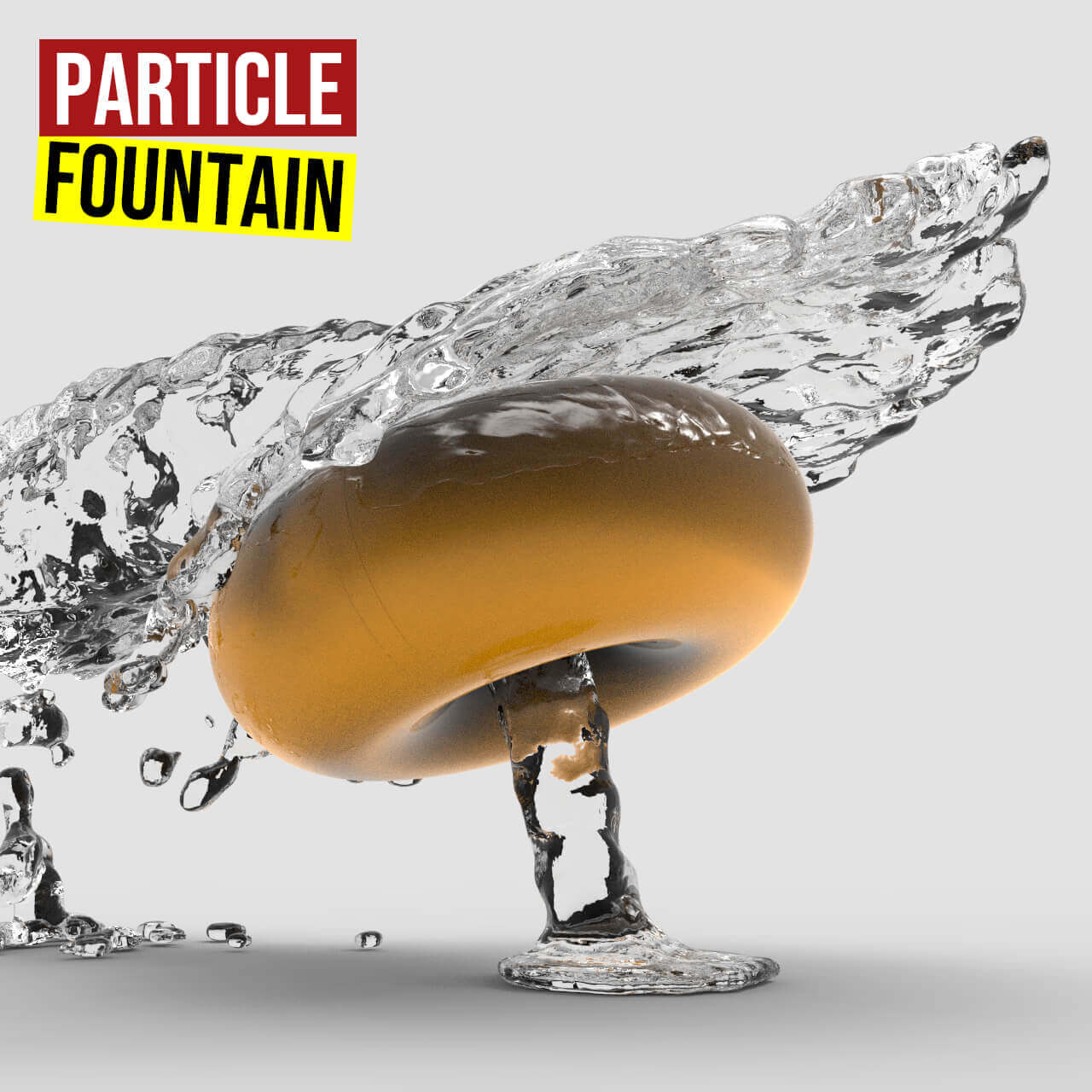Particle Fountain
In this grasshopper definition, you can simulate the collision between particles and colliders by using the flexhopper plugin.




In this grasshopper definition, you can simulate the collision between particles and colliders by using the flexhopper plugin.



Related Plugins
Plugins Official Links


In this Grasshopper Dendro tutorial, you can learn how to create a growing mesh by defining a series of spin fields on a NURBS surface using the Heteroptera plugin.
In this Grasshopper Tutorial for beginners you will learn how to use the Sphere collide component to generate evenly distributed holes on a NURBS surface.
In this Grasshopper Kangaroo example file, you can circle pack a mesh using the "TangentIncircles" component.
In this Grasshopper example file, you can utilize the Nautilus plugin to design a parametric Twisted Torus.
In this Grasshopper example file, you can model twisted torus strips and convert them into a spaceframe and panels using the Lunchbox Plugin.
In this Grasshopper example file, you can convert a series of curves into a mesh with a 3d groove pattern using the Nautilus and Weaverbird plugins.
In this Grasshopper tutorial, you will learn how to model a parametric joint on the corners of a box with controllable parameters.
In this Grasshopper example file, you can simulate an optimized path from an origin point/points toward a set of targets. The strategy involves branching at diverging points.
In this Grasshopper example file, you can model a staircase detail drawing from the plan view and easily change the parameters.
In this Grasshopper example file, you can design a parametric facade using four different techniques.
In this Grasshopper contour tutorial, we will learn how to extract a series of solids from a part of a mesh by defining the direction and length with a single line.
In this Grasshopper Millipede tutorial, you can learn how to model a series of smooth connecting columns to a roof and then analyze it using Millipede's Finite Element Analysis.
In this Grasshopper Kangaroo tutorial, you can discover how to simulate the flow of a series of particles on a solid and then convert it into a mesh.
In this Grasshopper tutorial, you can learn how to generate Perlin noise on a surface and convert it into a solid.
In this Grasshopper tutorial, we will learn how to generate a structural grid from a series of grid points.
In this Grasshopper tutorial, we will explore how to create a simple parametric gear and a radial mechanism, and also include an example file for the Iris mechanism.
In this Grasshopper tutorial, we will learn how to create a series of parametric solids using the "Tangent Arcs" component.
In this Grasshopper tutorial, we will model a parametric brick wall on a NURBS surface with a rectangular projection. We can also adjust the thickness of the bricks based on point attractors.
In this Grasshopper Kangaroo tutorial, we will model a parametric mesh pavilion by simply defining the top curve and the location and profile of the columns.
In this Grasshopper Kangaroo tutorial, we will learn how to create a mesh with controllable anchor points and n-gon polygons.
In this Grasshopper Architecture tutorial, we will model a parametric building facade and create a checkerboard pattern on the panels.
In this Grasshopper tutorial, we will generate parametric noise on an icosahedron mesh using the Nautilus plugin.
You can convert a series of planar closed curve boundaries into a Quad Remesh using this free Grasshopper Script.

Comments
Shompinice
How do I convert a particle set to a mesh surface? It feels like a water surface like the cover?
rezae
Hi Shompinice,
You can use Dendro plugin(Point to Volume component) to convert point cloud to mesh
Shompinice
How do I convert a particle set to a mesh surface? It feels like a water surface like the cover? I dont know how to do that
Shompinice
Attachment gh1.zip
ShompiniceMarch 24, 2021Reply
Attachment gh1.zip
How to convert the trajectory of particles in this tutorial (https://parametrichouse.com/particle-fountain/#) into curves?
I tried to use the method in this tutorial (https://parametrichouse.com/wandering-point-attractor/), as shown in the document, I have obtained the “point set (although the position is not correct)”, but I cannot pass them to use “interpolated point battery” to convert to curve.
Another idea might be
https://parametrichouse.com/particle-noise/
https://parametrichouse.com/swarm-noise/
but honestly I didn’t understand it. It seems that a loop is needed? But why is a loop needed? English is not my native language, so it seems a bit strenuous.
rezae
Particle simulation is a vast field in Computer graphic.
If you want to learn how those these components I suggest you to read this book : Nature of code
I also send you another massage which contains a gh file which I create a continuous polyline from the particles.
rezae
Attachment particle-fountain-gh-continues.zip
Dear Shompinice
I’ve made some few changes in the file and I’ve attached it here.
You can use Fatten , Pipe or even Dendro plugin to thicken the generated polyline